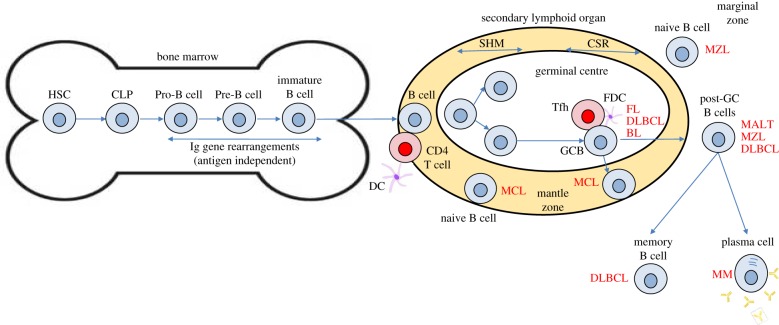Figure 1.
B-cell development and the origins of B-cell lymphoma. B-cell development commences in the bone marrow whereby committed B cells rearrange the immunoglobulin (Ig) genes to generate a B-cell receptor. On entering the periphery, B cells congregate in lymphoid tissue wherein antigen-dependent B-cell development takes place. Naive B cells on encountering antigen become activated and generate germinal centres in which the processes of somatic hypermutation (SHM) and class switch recombination (CSR) take place in the dark and light zones, respectively. Studies of the status of the Ig genetic regions within lymphoma cells can align their origin in either pre- or post-germinal centre B cells. For example, the majority of mantle cell lymphoma (MCL) do not display mutations within V-region genes suggesting they have not passed through the germinal centre and are therefore presumed naive. The origin of lymphomas is also assumed from their growth pattern and cell surface expression of proteins indicative of stages of B-cell development. MALT, mucosal-associated lymphoid tissue lymphoma; MZL, marginal-zone lymphoma; DC, dendritic cell; DLBCL, diffuse large B-cell lymphoma; CLP, common lymphoid progenitor; HSC, haemopoietic stem cell; GC, germinal centre B cell; FDC, follicular dendritic cell; Tfh, follicular helper T cell; FL, follicular lymphoma; BL, Burkitts lymphoma. Acronyms in red denote the presumed cell of origin of the indicated lymphoma sub-type.

